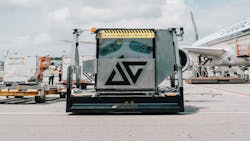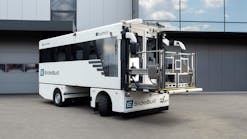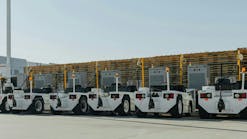When we look at the operation of aircraft, a lot has changed since the dawn of the jet age in the 1960s, with a frankly incredible 40-percent improvement in fuel efficiency of aircraft. However, on the ground that progress has been far less apparent, with GSE operations still using the same fundamental tug and three CONEX they did 60 years ago.
If you took a baggage handler from the 1960s and put them in a modern airport, the jets would be a thing of wonder, but the luggage tractor and trailers would be instantly recognizable. We have to acknowledge that towing three dollies behind a tractor has worked and has been the backbone of ramp operations around the world for all that time, but can it be done more efficiently?
What if the tug was to carry a ULD, instead of just towing trailers? What if the tug was built around an electric drivetrain, rather than a designed to be diesel product with a retrofitted motor and battery system? Could a tug or dolly load and unload itself and allow the redeployment of security cleared ground staff? These are the questions we feel the industry should ask itself as the pressure to electrify ground fleets gathers momentum.
As airport operators move away from the familiarity of diesel vehicles, perhaps it is time to look at how the whole operation and movement of vehicles in the airside environment could be made more efficient, reducing operating costs and improving passenger experience with reduced delays for luggage.
Revolutions often make people nervous, let’s think about Dick Taylor, then Boeing's director of engineering when approached FAA director J. Lynn Helms in 1980 about the possibility of an exemption from rules for twin engine aircraft over oceans: his response was "It'll be a cold day in hell before I let twins fly long haul, overwater routes." But Boeing knew that twin engine aircraft would be fundamentally more efficient in operation and could do so without compromising passenger safety and so they persisted.
What happened? Well, the Boeing 767-200ER entered service just four years later and ETOPS operation is now the accepted norm for Transatlantic flights; maybe it is time for a similarly shocking revolution in ground handling?





